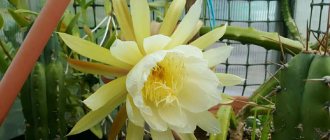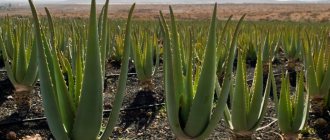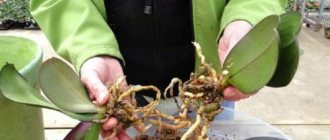Cacti always have a place indoors. Residents of the northern regions, where these amazing plants cannot survive on the streets and in gardens, are attracted to them by their unusual appearance and decorative properties. Admiring the cacti, you can’t help but feel like you’re in a hot desert or on the prairie. It is believed that plants do not need special care. But this is a deception: to grow cacti, you need to have knowledge of indoor farming techniques.
For indoor plants, soil selection is important. Each species will need its own components of the soil substrate, their proportions will vary depending on the structure of the root system. You can, of course, buy soil in a store, but will it meet the requirements? The mixtures are not always formulated correctly. Therefore, it is better to choose the composition yourself that will allow the cacti to fully develop.
Review of the best cactus varieties to grow
Cacti belong to the Carnation family. They are able to grow in deserts, places where precipitation rarely falls. Their succulent, fleshy leaves store moisture, just like succulents. The arid regions of South America and the West Indies are considered the homeland of remarkable plants. But the best types of cacti have spread throughout the world and are successfully taking up residence in apartment window sills.
Among them stands out:
- Mammillaria. They call the plant a variety of names: snowball, lady's fingers, and golden star. These spherical or columnar cacti are small in size. The growth of the fleshy stem reaches 20 centimeters. A distinctive feature of the species are the tufts of spines that protrude from closely spaced tubercles. From an early age, mammillaria begins to bloom, becoming covered with flowers of various colors.
- From large lobivia cacti. The dimensions of the cylindrical stem reach half a meter. On the surface of the stem, areas of light and dark shades of green alternate. The entire stem of the plant is decorated with spines, straight and also curved. The root is a tap or turnip-like in appearance. At the root, many children are formed, with which the lobivia reproduces. The funnel-shaped flower petals are located on the side of the stem. An adult plant opens up to 25 brightly colored buds. Another name for cactus is Echinopsis.
- Cereus is a columnar cactus. This long-liver is capable of reaching a height of up to a meter or two, and in nature – up to 6-8 meters. The straight, candle-like stems have spines. And during the growing season, white or red buds are formed.
- Prickly pear. The flat-oval fleshy stems are divided into segments. The bluish-green color of the cactus is interesting. The spines of the prickly pear are modified, and the short hairs cause trouble for those who touch the stems. They dig into the skin and are difficult to get rid of. The plant blooms from spring to autumn.
- Phyllocactus, or epiphyllum. These are leaf-shaped types of cacti, although leaves refer to the flat stems of the plant. Decorative flowers of a cactus. They are large and brightly colored. There are species with fragrant buds.
Depending on the variety of cactus, a container and soil are selected.
Soil care
The soil also requires care.
- Sterilization . The very first thing you need to do for him is sterilization. 20-30 minutes is enough for the entire soil to warm up to 100 C.
- Watering . Water the plant depending on environmental conditions. At high temperatures, low humidity and intense sunlight, the cactus requires more liquid. Therefore, in summer, cacti, with the exception of cloudy days, need to be watered daily, with the onset of autumn, reduce watering, and in winter, reduce watering to 2 times a month.
- Chemical - the cactus is sprayed with a systemic insecticide twice, with an interval of 14 days.
- Mechanical - the cactus and its roots are washed with warm water, after which the cactus is dried and transplanted into clean soil.
For greater effect, you can combine both methods.
As it turned out in reality, there is quite a lot of trouble with the cactus . But if this does not put off the amateur gardener, then the prickly friend will be an excellent alternative to the aloe, agaves and ficus trees that have become boring to us.
Selecting a container for a plant
You need to decide on the size of the pot for cacti in advance. The root system of plant species differs in shape and length. Mammillaria have many babies on the sides, so the volume of the pot should be 10 centimeters.
The branched roots of some species require a wide but low container. Lobivia has a long root, and a deep pot is selected for it. The material from which the cactus container is made does not play a special role. Both ordinary plastic and ceramic ones will do.
Plants should not be planted in metal containers.
Containers come in different shapes. They are all good for cactus. You can use round, or better yet, rectangular or square pots or tubs if the plant has reached a large size. A good owner always carefully monitors the condition of his “prickly friend”, promptly transplanting him from a small container to a larger one.
Useful tips and nuances
If everything is done correctly, after a couple of weeks the cactus will settle into its new location and continue to grow.
To avoid unexpected problems, you must remember when transplanting:
- carefully remove all soil from a store-bought plant;
- add a sufficient amount of disintegrants to the self-prepared soil mixture;
- do not take an excessively large pot;
- after washing the root system, dry it well;
- leave the root collar on the soil surface;
- For the first week, keep the plant in a shaded but warm place;
- In case of injury during transplantation, sprinkle the damage with crushed coal.
If after 10-15 days the cactus remains lethargic, mistakes were probably made. It is worth analyzing the entire transplant process and, possibly, repeating it.
Replanting a cactus is done infrequently, but if it was purchased in a store, it needs to be done as soon as possible. It is important to choose a pot of the appropriate size and thoroughly disinfect the soil. The transplantation process itself is not difficult, but it is better to wear reliable, durable gloves.
What soil is best for cacti?
Specialized stores will offer substrate for cacti and succulents. But it is not suitable for all types of plants. The basis of the finished mixture is peat. This component is not always useful for cacti that came to us from deserts or mountains. After all, there cacti grow on dry soil, stones, sand and clay. And nutritious peat can destroy cacti, since microflora that is undesirable for cacti develops in it.
The ideal environment for desert dwellers would be one that mimics grainy, arid soil that lacks nutrients. Harsh soils and minimal precipitation are normal for cacti. They manage to develop and bloom in such conditions. Therefore, the soil must be selected taking into account the needs of indoor crops.
How to properly prepare soil at home?
The main components of mixtures for cacti will be:
- clay-turf soil
- leaf soil
- coarse sand or fine gravel
- mineral component
Clay-turf soil can be found in meadows in the floodplains of rivers, near reservoirs. It is light brown in color and heavy in structure. Leaf soil is taken from parks, gardens, and forests. Pronounced black color indicates decomposition products of plants and leaves. The soil is nutritious and loose.
Sand of the required structure is found on river banks or in quarries. Vermiculite and expanded clay are suitable mineral components. You can replace them with brick chips and crushed charcoal. The substrate for cacti is made up of two parts of turf and leaf soil, three parts of sand and one part of mineral components. Of the fertilizers, cacti require more potassium. If the root system of the cactus is turnip-like, then increase the amount of vermiculite to 60 percent of the total mass of the substrate.
The finished mixture is checked: it should be loose, permeable, slightly moist, and after being compressed into a lump it crumbles easily.
Interestingly, cacti with pubescence and spines need chalk or marble chips in the soil. Leaf cacti require more nutritious soil, so you can add humus to the pot, excluding minerals containing calcium and magnesium. When the soil for cacti at home is prepared correctly, the plant will develop and bloom without problems.
Substrate for cactus: how to make it
It is impossible to say what kind of soil a cactus likes, because, as mentioned above, each species needs its own substrate. Which one will be described below.
The soil mixture for desert species consists of the following components, collected in identical parts:
- peat;
- leaf soil;
- turf land;
- coarse sand.
A completely different soil should be used for cacti that live naturally on the plains. These include the large genus of Echinopsiva. As for the substrate, its features lie in its nutritional value and porosity.
Special requirements are placed on the soil for the Cereus family, because they grow quickly and reach impressive sizes. Such flowers will feel good only in a fertile substrate.
Therefore, when compiling it yourself, you should add:
- one part of leafy soil;
- a quarter of humus;
- one part of turf land;
- one part peat.
For unpretentious cacti, it is possible to create a partial soil mixture using 2 parts of purchased land, as well as:
- one part gravel;
- two parts coarse sand.
When planting a cactus, it is necessary to place drainage at the bottom of the flowerpot. It can be crushed stone or expanded clay. After this, you will need to pour in some soil and add some pebbles or expanded clay on top. This is necessary and obligatory to do in order to prevent the root collar from rotting. In this case, much attention is paid to soil moisture.
Rules for planting indoor crops
It is better to plant or replant a cactus in April or May. A layer of drainage is placed in the container, and then a little prepared soil.
It is advisable to disinfect the soil mixture before planting.
You can spill boiling water on the soil two weeks before planting the plant. Steaming in the oven cannot be ruled out by placing the container in a slightly heated cabinet for an hour. A microwave oven is also used for these purposes. In any case, the procedure is carried out in advance so that the earth has time to be saturated with beneficial organisms.
The roots of the cactus are straightened, lowered into the pot and sprinkled with soil. After lightly compacting and watering, you need to add soil and a drainage layer on top. Cacti are replanted twice a year, choosing a new pot and substrate.
Is it necessary to replant a cactus immediately after purchasing it in a store?
There are several cases when replanting a cactus is necessary: damage to the plant or pot, complete depletion of the soil, and also buying a cactus in a store. Experienced gardeners strongly recommend not to delay replanting a purchased cactus: the substrate can be infected with diseases and pests. Urgent replacement of the soil is especially important if you buy an imported flower, since most often it consists only of peat, watered from time to time with fertilizer solutions.
A cactus bought in a store may well have a marketable appearance, but weak and not entirely healthy roots. Therefore, in contrast to the next replanting of “your” plant, when the main part of the soil is left on the roots, the “store-bought” cactus is replanted differently.
For this:
- They take it out of the pot.
- Carefully clean the roots from old soil (with tweezers or, if they are completely healthy, with hot water).
- Rotten and dried roots are cut off and the sections are treated with antiseptics.
- Plant the cactus in new (dry) soil, placing the root collar slightly above ground level. Water only every other week.
Washing the roots from old soil with water is much easier than removing it in a dry state, but it is also much more dangerous, since even the slightest traces of rot in this case can spread to new areas of the root system and subsequently destroy the plant. It is especially dangerous to wash the roots at high air humidity. In any case, after washing, the cactus is dried on a sheet of paper for at least a day.











